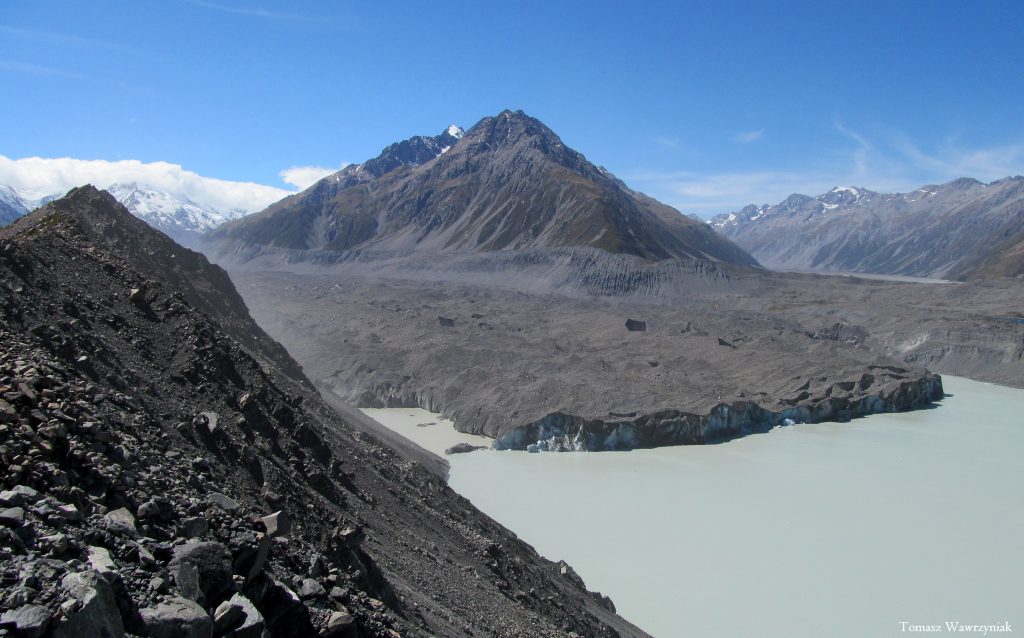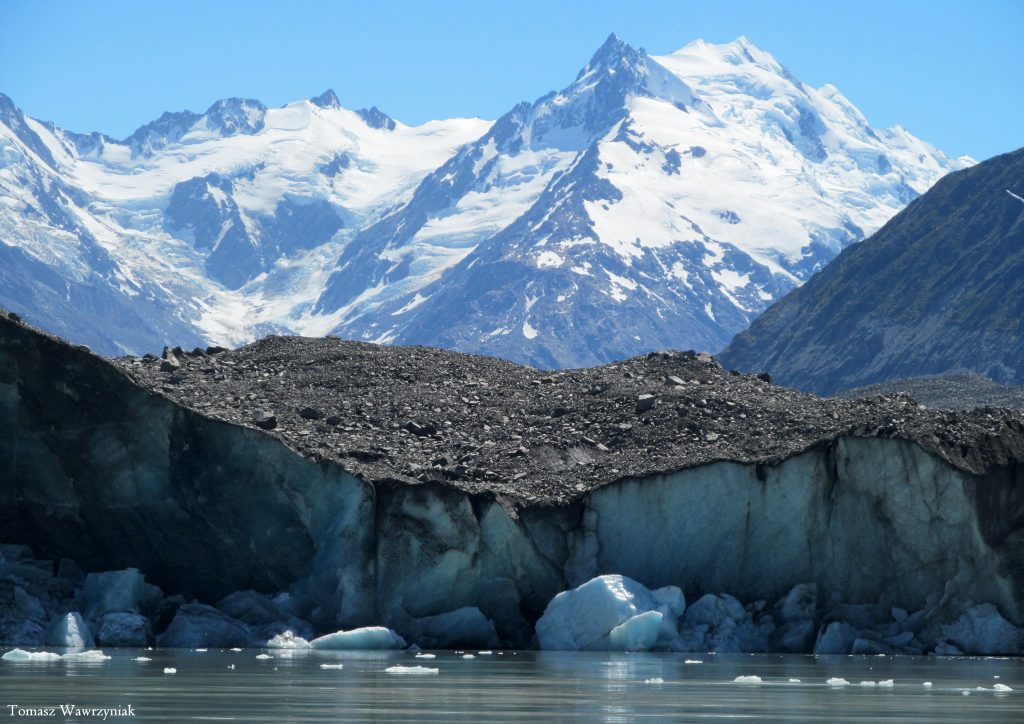Supraglacial debris
This is the debris (rocks, soil, etc.) that is carried on the surface of a glacier. The debris usually originates from rockfalls as well as mixed snow and rock avalanches from the sides of steep valleys.
The thickness of the debris can range from a few millimetres to more than several metres. How debris cover is distributed over the surface of a glacier influences how the glacier’s volume changes over time. A continuous debris cover of more than five centimetres thick on the glacier surface reduces ice ablation, while a debris layer thinner than five centimetres enhances the melt rate of the glacier.
Debris-covered glaciers are extensive and common in mountainous regions such as Himalayas, Pamir, Caucasus Mountains, Alaska, Alps, and Southern Alps in New Zealand.
- Supraglacial debris, Southern Alps, New Zaeland
- Supraglacial debris, Southern Alps, New Zaeland




 This project (EDU-ARCTIC) has received funding from the European Union’s Horizon 2020 research and innovation programme under grant agreement No 710240. The content of the website is the sole responsibility of the Consortium and it does not represent the opinion of the European Commission, and the Commission is not responsible for any use that might be made of information contained.
This project (EDU-ARCTIC) has received funding from the European Union’s Horizon 2020 research and innovation programme under grant agreement No 710240. The content of the website is the sole responsibility of the Consortium and it does not represent the opinion of the European Commission, and the Commission is not responsible for any use that might be made of information contained.